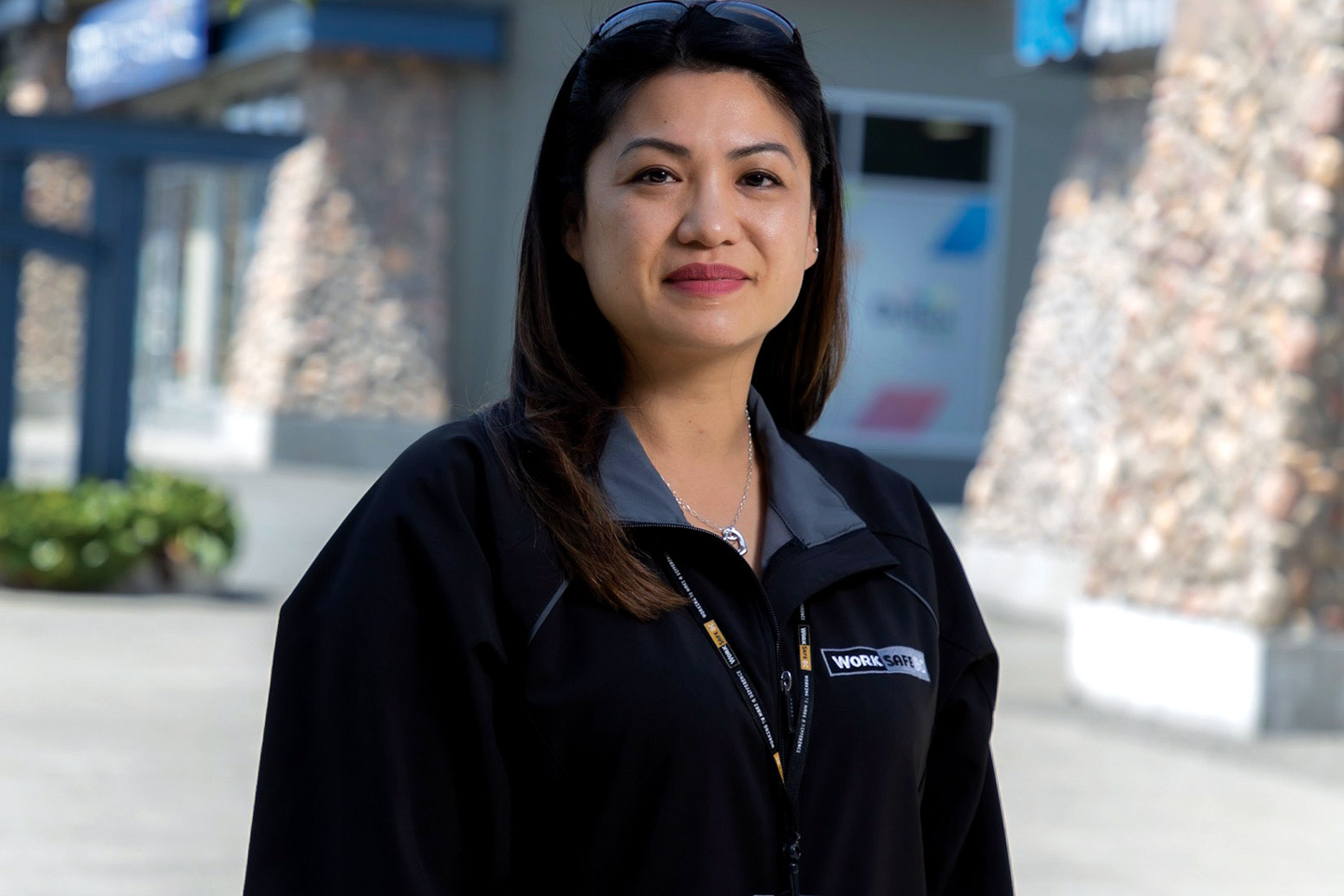Ask an officer: Reducing risk for lone retail workers late at night
Occupational safety officer Cheryl Dulay answers questions about protecting retail workers from the hazards of working alone late at night.
Cheryl Dulay
Occupational safety officer
Region: Surrey
Years on the job: 7.5
What qualifies as late-night retail?
Late night is between 11 p.m. and 6 a.m. This applies to businesses such as gas stations and other retail fuelling operations, and convenience stores or other retail stores where goods are sold directly to consumers. In these circumstances, anyone working alone must be at least 19 years of age.
What are the key risks for people who work alone late at night?
The big one is assault. Workplace violence is one of the top 10 costs when it comes to worker’s compensation for retail workers in B.C. Other risks for them include dealing with shoplifters, abusive and difficult customers, and unwelcome members of the public. All of these put the worker at risk of the use of force, threatening statements, or behaviours that can lead to violence. Even if there’s not a physical confrontation, an incident can be emotionally traumatic for the worker.
What safety measures do I need to use to protect my retail staff late at night?
Section 4.22.1 of the Occupational Health and Safety Regulation includes specific requirements when you have a lone worker. You need to identify hazards and assess the risks, then eliminate or minimize them. For example, locking down the store and having a barrier such as a transaction window can prevent physical contact. You also need a written check-in, check-out process for checking on the worker’s well-being. It can be as simple as a person calling in or out at regular intervals but it has to explain what steps will be taken if the worker can’t be contacted.
You also need a written procedure for handling money, and a time-lock safe that can’t be opened during late-night hours. You need to have video surveillance. After completing a risk assessment, the owner can determine how long the recording has to be kept before it can be erased.
If you don’t have any physical barriers, your store is very high risk so you need to have a violence prevention program based on risk assessment.
Be sure to train your workers in late-night safety procedures and give them refresher training. Just because something hasn’t happened in a year or two doesn’t mean it won’t happen again. What if there’s a medical emergency for the lone worker? Equip them with a personal emergency transmitter.
You do a lot of inspections. What are some tips you can offer based on what you’ve seen?
As much as possible, try to have a barrier. It’s possible to have a fully functional convenience store with a fully enclosed barrier. Keep minimal cash in your float and don’t display a lot of lottery tickets. Ensure there’s good visibility into and out of the premises — we’ve had employers take posters off windows because they block sightlines. You need prominent signage that says there’s a time-lock safe and video surveillance. Limit access inside the premises by locking the washroom and video equipment room. And test your emergency response system as best you can, so you have a good idea of the response time.
What safety measures are commonly overlooked?
There needs to be a security audit and it has to be repeated every two years. You need to bring in an independent qualified person to audit all your procedures. And all of your written safety procedures need to be reviewed at least annually. You should review them more often if they are not effective or if your operation has changed.
What should I emphasize when training my staff?
They need to know everything that’s covered in the store’s security audit report. When I inspect premises, I ask the worker questions such as “How would you report an incident?,” “What is your emergency report system?,” and “How would you be able to identify an escalating aggressive incident?”. The training you provide needs to cover these questions and anything else in the audit.
My shift sometimes includes working alone late at night. What can I do to help ensure my safety?
Most importantly, if there’s a robbery or shoplifting, don’t put yourself at risk. When dealing with customers, look for changes in their demeanour. Are they raising their voice? Watch their body language, too. Make eye contact with all customers and give each a friendly greeting. Keep a casual eye on anyone who appears to be loitering but don’t stare at them or confront them; offer assistance.
You should also keep emergency phone numbers handy. Don’t leave back doors open and unattended. Don’t take out garbage at night if the bins are in a secluded area.
This information originally appeared in the July/August 2019 issue of WorkSafe Magazine. To read more or to subscribe, visit WorkSafe Magazine.

